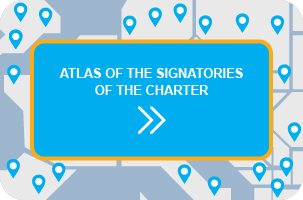Article 21 – Safety and Security
1. The Signatory recognizes the right of each woman and man to security of the person, and to liberty of movement, and that these rights cannot be freely or equally exercised if women or men are unsafe or insecure, whether in the private or public domain, or if they feel unsafe or insecure.
2. The Signatory further recognizes that women and men, in part due to different obligations or lifestyles, often face differing problems of safety and security, which need to be addressed.
3. The Signatory therefore commits itself:
a) to analyse from a gender perspective the statistics concerning the volume and patterns of incidents (including serious crime against the individual) that affect the security or safety of women and men, and if appropriate to measure the level and nature of fear of crime or other sources of insecurity;
–
b) to develop and implement strategies, policies and actions, including specific improvements to the state or design of the local environment (for example, transport interchanges, car parks, street lighting), or to policing and related services, to enhance the practical security and safety of women and men, and to seek to reduce their respective perceptions of lack of safety and security.















